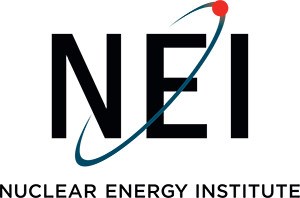
Source: Nuclear Energy Institute
US Nuclear Power Plants Posted Strong Performance in 2013
Excellence in Safety, Reliability Shows Professionalism of Industry Employees
WASHINGTON, April 14, 2014 (GLOBE NEWSWIRE) -- U.S. nuclear energy facilities continued operating at high levels of safety and reliability in 2013, according to data monitored by the World Association of Nuclear Operators (WANO) and the Institute of Nuclear Power Operations (INPO). Key indicators used to track performance against industry goals set for 2015 show that, as a group, the facilities that generate one-fifth of U.S. electricity supplies are approaching or already exceeding those goals.
"The 2013 performance indicators provide compelling empirical evidence of our sector's strong safety culture and dedication to continuous improvement through training, benchmarking and information-sharing," said Anthony Pietrangelo, Nuclear Energy Institute's senior vice president and chief nuclear officer. "The industry's ability to meet rising standards of safety and excellence speaks well for the professionalism of the people who operate and maintain our plants so that millions of Americans can benefit from reliable, affordable, carbon-free nuclear energy."
In virtually every area tracked by WANO and INPO, commercial U.S. facilities sustained the strong performance that has been the hallmark of their operations for more than a decade.
Here are some key metrics:
Capability factor. In 2013, U.S. facilities operated at a median capability factor of 91 percent, according to the WANO data. This is the 10th straight year that a median capability factor of 91 percent or higher has been achieved. Capability factor measures the amount of time a plant is on line and producing electricity. A high unit capability means a plant is successful in reducing unplanned outages and completing scheduled work effectively during planned outages.
Safety system performance. Nuclear power plants are constructed with multiple safety systems and backup power supplies so these systems are available, if needed, even when maintenance is being performed on a similar system or component. The three principal backup safety systems monitored by this indicator are two main cooling systems and backup power supplies used to respond in the event of unusual situations. The backup safety systems concurrently were available 94 percent of the time in 2013, continuing a decade-long trend above 93 percent. Each system at every plant has an availability goal just shy of 100 percent due to maintenance and testing.
Industrial safety. The nuclear industry proved once again that it has one of the safest working environments in the United States, with a record 0.04 industrial safety accidents per 200,000 worker-hours in 2013. This is well below the 2015 goal of 0.1 accidents per 200,000 worker-hours. Data compiled by the U.S. Bureau of Labor Statistics shows that it is safer to work at a nuclear power plant than in the manufacturing sector, leisure and hospitality industries, and financial sectors.
Unplanned reactor shutdowns. The 2013 total of 69 unplanned automatic or manual shutdowns was up from the record lows set in 2011 and 2012, but the fourth-lowest level recorded in the past 12 years.
Fuel performance. Ninety-four percent of U.S. facilities achieved zero fuel failures in 2013. This is the highest level ever recorded, and the 2013 mark is 21 percent greater than it was just six years earlier. This indicator measures the percentage of reactors with no failures in the metal barrier that surrounds nuclear fuel. The industry's 2015 goal is that all facilities operate without a fuel failure.
Chemistry effectiveness. This indicator measures water chemistry control, a key means to protect plant components over the long term. Last year the industry set records for excellence in this area for boiling water and pressurized water reactors. The industry's 2015 goal already is being met for both reactor types.
WANO, headquartered in the United Kingdom, compiles nuclear energy industry performance data annually. Data for the U.S. industry is analyzed by the Atlanta-based Institute of Nuclear Power Operations to help set challenging benchmarks of excellence against which safety and plant operation can be measured. INPO was established by the U.S. nuclear energy industry in 1979 to promote excellence in safety and operating performance above and beyond federal regulatory requirements.
"In spite of some market challenges, the industry continues to heavily invest in equipment, training and implementation of best practices. The performance indicators speak to the resiliency of our plants and dedication of industry employees people to adapt to changing conditions and maximize safe operations," Pietrangelo said.
Nuclear power plants generated an estimated 789 billion kilowatt-hours last year, a 2.6 percent increase from 2012 at a cost below that of other sources of generation.
In 2012 (final figures for 2013 are not available yet) the industry average electricity production cost (encompassing fuel and operations and maintenance expenses) was 2.4 cents per kilowatt-hour, lower than production costs at coal-fired power plants (3.27 cents/kwh) and lower than production costs at natural gas-fired power plants (3.4 cents/kwh).
The Nuclear Energy Institute is the nuclear energy industry's policy organization. This news release and additional information about nuclear energy are available at www.nei.org.